The Heartbeat of the Neighborhood
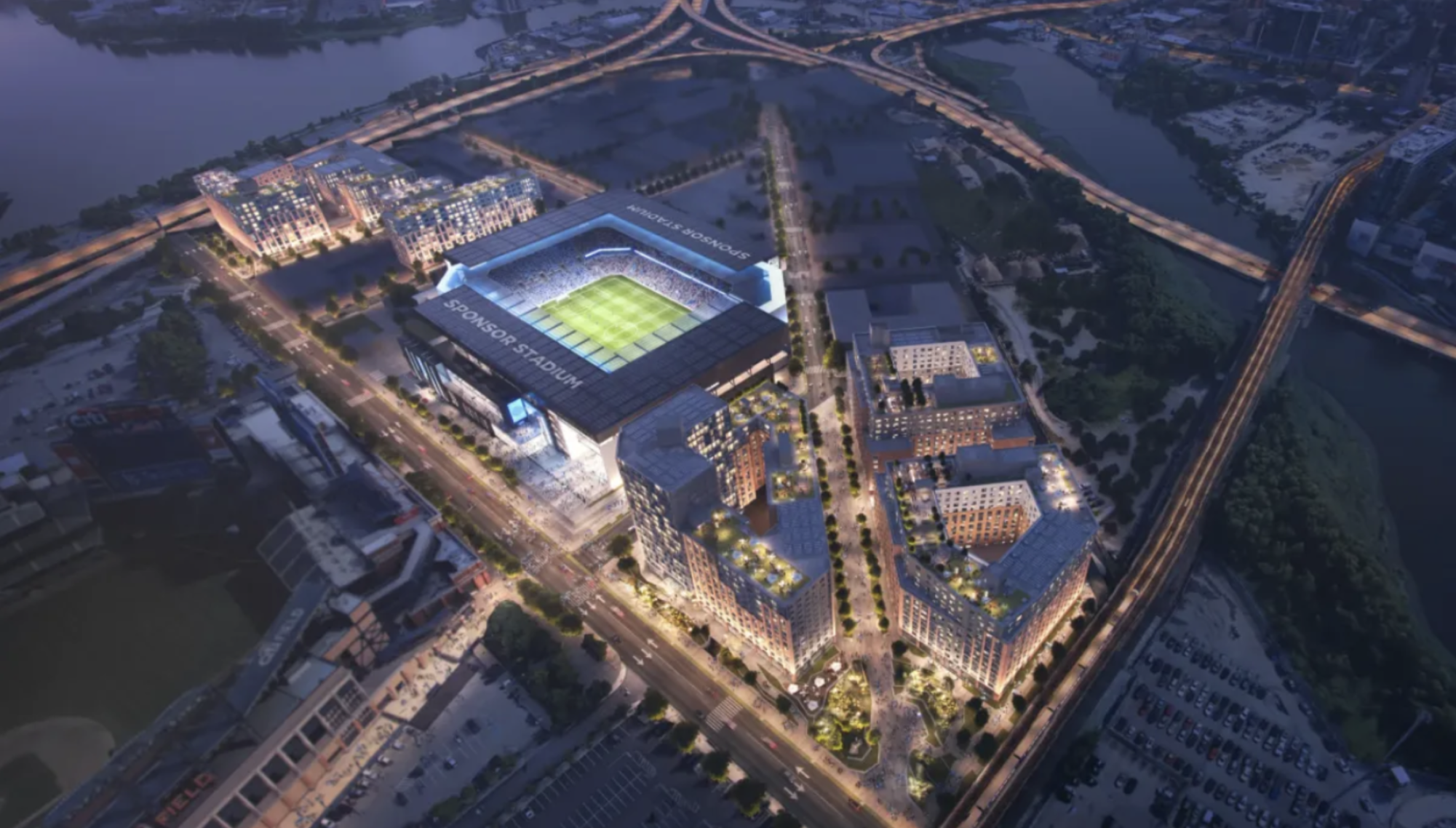
The New York City Football Club’s (NYCFC) new stadium development in Willets Point, located in Queens, New York, might be the key to unlocking a brighter future for the borough and beyond.
NYCFC is a professional soccer team founded in 2013. It currently borrows Yankee Stadium in the Bronx and Citi Field in Flushing for its home matches but lacks a stadium of its own. The club hopes its fortunes will soar following recently approved plans to construct a new stadium in Queens on an underused site in Willets Point.
“We’ve been waiting for this, New Yorkers,” Douglas, a fan in his 20s, said eagerly as he waited for his team to appear. Dressed in a black NYCFC tracksuit, Douglas comes to as many games as possible and has cheered his team on through thick and thin.
A week earlier, NYCFC had received approval for its new stadium from the New York City Council. Douglas was celebrating at a pre-match rally at Citi Field, ahead of their third out of five back-to-back home matches. Today’s opponent, on April 20, 2024, was DC United.
The long-awaited kickoff was scheduled for 7:30pm, but the atmosphere was already electric well before the match began. The palpable sense of anticipation was building as the kick-off drew nearer. Waves of fans poured off the Long Island Railroad and the Seven train. People were excitedly talking, laughing, and taking photos of themselves with posters of the new stadium plans in the background.
The air was filled with the smell of hot dogs and popcorn. The stadium was decorated with team-colored banners and flags, adding to the vibrant atmosphere. The unmistakable sound of rhythmic drumming, blaring trumpets, and spirited chanting became increasingly louder.
The fans were soon swept up in the festivities, eager to join in the revelry and become a part of the pulsing rhythm surrounding them. The melodies seemed to reverberate through the very ground beneath their feet.
Ahead of the game, I found myself face-to-face with Council Member Francisco Moya, who has been at the forefront of the campaign for a new stadium. Dressed in a denim jacket, Moya stood out from the crowd of supporters in a bright orange team scarf.
His words carried a weight of conviction that could not be ignored. It was clear that he firmly believed in soccer’s transformative power, not only as a game but as a force for positive change within the community.
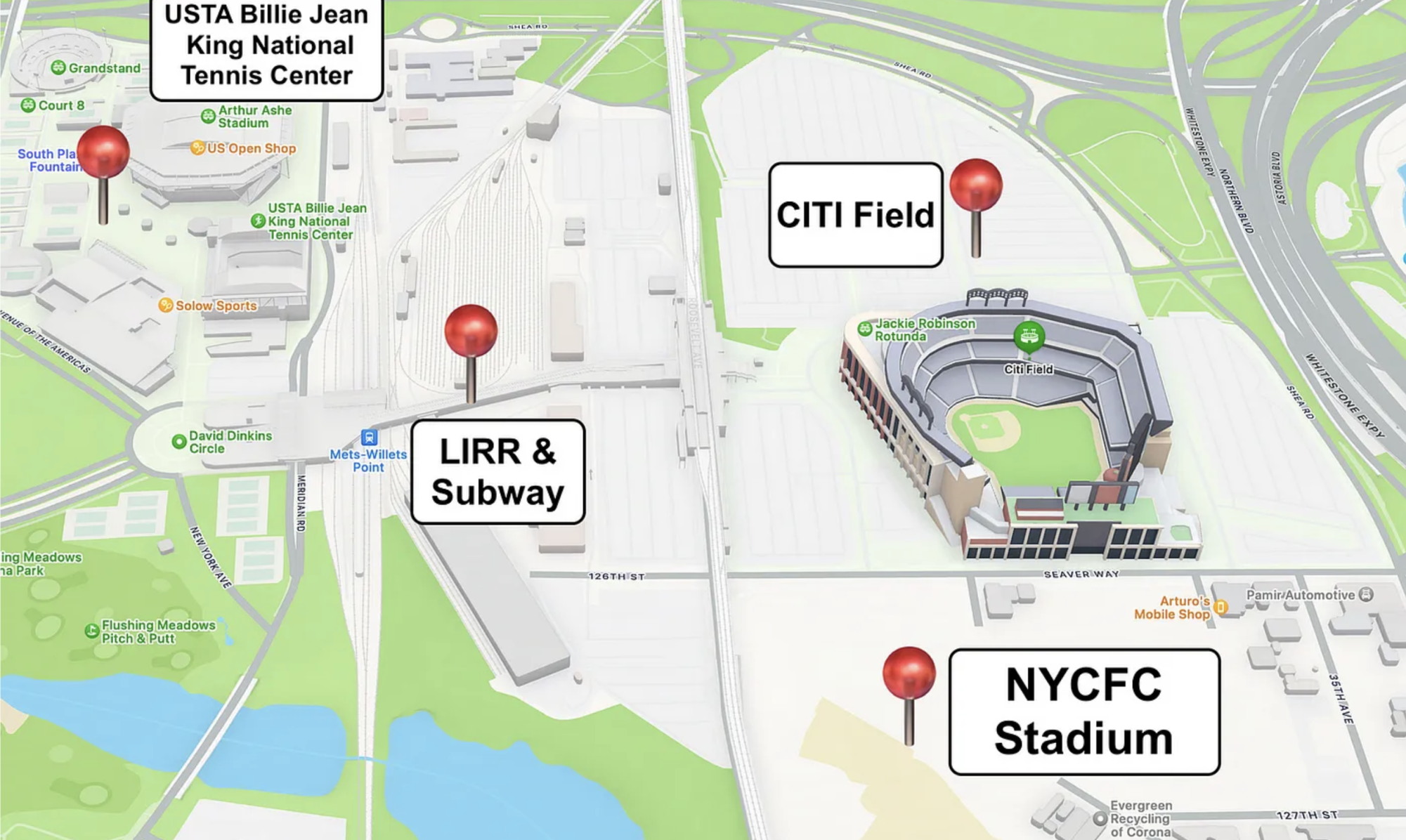
This 23-acre site is occupied by car garages right next to nearby Flushing Meadows-Corona Park. The proposed stadium project aims to revitalize Willets Point by turning it into a modern sports and entertainment hub. In addition to the state-of-the art soccer-specific stadium for NYCFC, a new public school and affordable housing, there will be retail stores, a hotel and 40,000 square feet of new public open space.
This project is being developed by NYCFC with money from the Citi Football Group, which is majority owned by Sheikh Mansour’s Abu Dhabi United Group. With the support of New York city council, it aims to use sports to stimulate the economy and create over 1,500 permanent jobs and 14,200 construction jobs.
It is a new chapter for Queens. The implementation of NYCFC’s stadium will blend ambition and innovation in a dynamic mosaic. It will be built next to Citi Field, home to the Mets baseball team, and across the street from USTA Billie Jean King National Tennis Center, where the U.S. Open is held yearly.
NYCFC is all set in its grand vision: a breathtaking new stadium and a dynamic housing development that will redefine the very essence of Queens. Can it pull off such an ambitious scheme? The hope is to improve the quality of life for residents in Queens and surrounding areas. But the impact of a project of this magnitude will last for generations. It is important to get it right.
The new stadium won overwhelming approval from the city council on April 11, 2024, with 47 out of 51 elected members supporting the project. This stamp of confidence is a declaration of belief in a future where soccer and community come together, creating endless possibilities.
Fernando is a devoted fan of NYCFC, who lives in New Jersey. He makes regular trips across the Hudson River to support his favorite team alongside his family. Although he is excited about the new stadium, he worries about potential traffic congestion during peak seasons. He is particularly concerned about the increased number of fans attending baseball games, tennis matches, and now soccer fixtures.
“One of my concerns is parking. How much traffic is there going to be? But besides that, I just hope they keep the promise with affordable housing. That’s a big thing. Whenever something big like that, they don’t think about the people,” said Fernando.
Moya suggests that the installation of a fresh access ramp on the northeast side of the Van Wyck Expressway would aid in the smooth flow of traffic. Douglas said the stadium was “privately funded, so it’s not gonna come out of our money. There won’t be congestion. All that stuff is answered. That’s really the main concern people had.”
Workers are already busy with tasks at several construction sites. They are wearing hard hats and neon vests, and their movements look like they are performing a choreographed dance on a stage. The sound of hammer strikes and machinery creates a symphony of transformation.
These structures act as threads woven into the fabric of urban life. They must do more than impress; they must actively involve, consult, and integrate with the diverse tapestry of their surrounding area.
Stadiums are not just sports arenas but also bustling hubs that have the potential to enrich communities. With their expansive infrastructure and resources, stadiums can transcend their primary purpose and become dynamic centers where various activities and programs can take place.
Envision colorful celebrations of various cultures filled with music and dance, lively performances that light up the night sky, and enthusiastic sports workshops that foster the skills of upcoming athletes. These structures act as a hub for boundless opportunities, uniting the community with a shared feeling of togetherness and acceptance throughout the neighborhood.
Los Templados is an official fan club of NYCFC known for its passion and dedication. It showcases the power of community-centric stadiums through various fan-driven events, youth development initiatives, and outreach endeavors.
Jonathan Salas, president of Los Templados, says, “The excitement for the stadium and the whole Willets Point project is through the roof. We have been lucky enough to be involved in some fan experience ideas that will take place.”
Fan clubs can help to create inclusive and vibrant neighborhoods that enrich the lives of all who call them home. Salas argues that public transport should be a priority of the new development.
What are other cities doing?
Across the Atlantic, Barcelona, home to one of the best-known soccer teams in the world, provides an example of the strengths and weaknesses of stadium development. When its former soccer stadium, Camp Nou, was built in 1957, nobody gave a thought to the economic benefits. But as the reputation of the club grew, it sparked a renaissance in the once-sleepy Les Corts neighborhood. The stadium’s construction breathed new life into the area, leading to a flurry of commercial activity and an influx of residents.
In 1992, the city hosted the Olympics and built a state-of-the-art stadium that was praised for its beauty but criticized for displacing marginalized communities. And now Barcelona is building a new stadium, Spotify Camp Nou, without providing any new affordable housing onsite.
On a recent visit to Barcelona, I met Jauma, a lifelong fan of his home team. He has never missed a game, despite being born blind. During a Champions League match between Barcelona and Napoli, Jauma “watched” the game — with his grandson.
Throughout the match, Jauma’s grandson would lean towards him and describe everything happening on the field. He would explain the players’ movements, the crowd’s reaction, and the scoreline. Despite being unable to see, Jauma was fully immersed in the experience and could feel the excitement and tension of the match.
For Jauma, watching the game with his grandson was a special moment he will never forget. It was a testament to the power of football to bring people together and create unforgettable memories, regardless of their physical abilities.
I asked him whether he thought the new stadium should bring more benefits for the local community, such as affordable housing.
“It would be a good option for people in need, vulnerable people, and people with disabilities,” Juama said.
As with NYCFC’s stadium, the new soccer facility in Barcelona will be part of a wider sporting hub including a basketball arena and ice hockey rink. “There is going to be a whole commercial complex,” Juama added, “so the idea you propose would not be bad.”
In the diverse life of a city, stadiums are grand stages where dreams are born and legacies are created. However, behind these sporting coliseums’ shiny and impressive facades are stories of triumph and unrest. Cities struggle with the complexity of development that comes with these massive structures.
Back in the early 2000s when construction was underway in the Bronx, the new Yankee Stadium was an indicator of a new era. The fans cheered, but there were whispers of discontent in the air. Community displacement and neglected infrastructure were the concerns that echoed through the borough’s streets.
In an article published by City Limits, David Gratt, a Bronx resident, expressed his concerns about building a new Yankee Stadium instead of renovating the existing one.
“This is a poorly designed replica of a historic site,” he argued. “The current stadium should be renovated rather than torn down. The city shouldn’t be spending money on it. It isn’t a public good, it’s a private one.”
Yet other cities have seen the positive impact of stadium-centric development in densely populated areas and offer valuable insights into the key factors that contribute to their success. The Austin FC stadium, located in the heart of the Texan capital, has become a catalyst for community engagement and environmental stewardship.
Austin FC’s Sustainability Program is one initiative that it has launched to promote environmental resilience and minimize its ecological footprint. This program is pioneering innovative solutions to tackle environmental challenges, such as Ecostations for waste disposal, and provides electric vehicle charging stations and free water to encourage fans to fill up reusable bottles.
The common thread among the success stories is strategic planning and community engagement.
The Allianz Arena in Munich, Germany, home of the soccer team Bayern Munich, is a shining example of how strategic planning can transform a stadium into an accessible one. Completed in 2005, the Allianz Arena boasts a stunning design that incorporates colorful LED lights that can be customized to match the team’s colors during matches or events, making it a true spectacle for all who witness it.
The Arena is surrounded by a mix of retail spaces, restaurants, office buildings, and recreational areas, creating a lively and economically active area even when no events are taking place. The stadium is strategically positioned with excellent public transportation infrastructure and is well-connected to Munich’s extensive transit network, including the U6 metro line, which has a dedicated stop at the stadium. This reduces dependence on cars, alleviates traffic congestion, and minimizes environmental impact.
The success of the Allianz Arena is significantly influenced by its strong focus on public transportation infrastructure. The U6 metro line plays a key role in this, with a dedicated stop at the stadium (Fröttmaning station), reducing the reliance on cars, especially on match days. This makes it convenient for fans to travel from various parts of the city and surrounding areas. The proximity of the metro station to the stadium ensures a smooth and efficient flow of spectators, greatly enhancing the overall fan experience. Moreover, the availability of park-and-ride facilities encourages fans to use public transportation, leading to a further reduction in traffic congestion in the area.
As stadiums become symbols of progress and prosperity, it is vital to remember the voices of those whose lives are intertwined with these developments. Their stories, struggles, and hopes paint a vivid backdrop against which the drama of urban renewal unfolds.
While they navigate the maze of stadium-centric development, it is crucial to infuse their journey with colorful hues of inclusivity, equity, and community empowerment. Ultimately, it’s not just about the games they play — it’s about the people whose lives are touched by the transformative power of sport and city.
Out of the “valley of the ashes”
Advocates of NYCFC’s proposed development are optimistic about its potential benefits. The new stadium is expected to draw many spectators to games and events, which could result in a substantial increase in foot traffic. Nearby businesses hope to capitalize on this increased traffic, which could significantly boost revenue and attract new investments. By creating residential communities around stadiums, organizations can tap into new revenue streams and satisfy a market that seeks the convenience and thrill of living within walking distance of their beloved teams.
NYCFC estimates its stadium could generate economic activity worth $6.1 billion over the next 30 years. The promised 2500 units of housing represent Queen’s largest affordable housing project in 40 years.
New York Mayor Eric Adams sees the initiative as a turning point, with a new thriving community emerging from the ruins of the past.
“Housing is the goal — and with today’s City Council vote, I’m proud to say that we just scored the goal of the decade,” Adams said in a statement. “We’re bringing 2,500 affordable housing units, 150,000 square feet of public open space, thousands of good-paying jobs, and the city’s first soccer-specific stadium to a neighborhood in Queens that used to be known for its junkyards. We’re building a brand-new community out of the ‘Valley of Ashes’.”
The success of any plan depends on its execution. As the city and NYCFC undertake this ambitious project, they must balance economic growth and social responsibility. It remains to be seen if they can keep their promises of prosperity and inclusivity or if these goals will prove as challenging to achieve as a last-minute winning goal.
Urban development is a complex process with its own set of issues that arise with each step forward. Although progress is often appealing, shadows lurking on the horizon cast a sobering contrast against the bright lights of transformation.
Despite the promise of revitalization, many neighborhoods face the threat of gentrification. This powerful force can cause property values and rental prices to skyrocket, attracting more affluent residents. Unfortunately, this trend can displace long-standing communities and damage the social fabric of once-thriving neighborhoods. Cities worldwide are grappling with this issue and trying to find ways to balance growth with preserving the unique character of their communities.
New York City is already one of the most expensive global housing markets. The median rent has surged from around $2900 in 2021 to $3600 in 2023, according to StreetEasy. Policymakers and city planners face the daunting task of finding practical solutions to preserve the well-being of lower-income residents amidst the challenges posed by the ever-increasing housing costs.
Christopher Sellers, a historian and expert in housing issues at Stony Brook University, believes NYCFC’s project looks promising: “Willets Point is the kind of place that the developers should go to, rather than places that have existing communities.” He added that, as an underdeveloped site, it could be a “lower key, less destructive intervention” that would enable the “diversity of the population to continue.”
The Mandatory Inclusionary Housing program is an initiative to maintain affordable housing in the face of relentless gentrification. Similar efforts can be observed in cities like San Francisco and Seattle, where inclusionary zoning laws and tenant protection measures seek to balance progress and equity.
When making policies and implementing changes, it is crucial to consider the human aspect. This means considering the genuine feelings and personal opinions of those directly impacted by the changes. Some people may feel excited about the prospect of living near a stadium as it may bring new opportunities and a sense of vibrancy, while others may feel uncertain and fearful about being left behind in the face of progress.
Streets are often brought to life by the unsung heroes — the street vendors. They tirelessly prepare and serve their mouth-watering delicacies, infusing the atmosphere with a dash of flavor and a splash of color, leaving us mesmerized by the sights, sounds, and smells of city life.
On game day, vendors like Jose stand out as symbols of hospitality, providing a welcome break for those seeking a quick bite or a sip of refreshment.
Jose can often be found at popular locations near famous stadiums such as Citi Field and Yankee Stadium. He always wears a smile on his face and moves with a lively step, fitting perfectly into the exciting atmosphere. His dedication and hard work have made him a beloved part of the stadium experience.
Recently, Jose has been dealing with a new source of concern. He is worried the new stadium will jeopardize his informal business. He fears that this could negatively impact not only his livelihood but also all those who depend on him for support. “It depends on whether the police will be more strict with the new stadium,” Jose said.
While facing the effects of gentrification, it’s important to remember that a city’s greatness isn’t defined by its tall buildings or fancy sports venues. It’s genuinely measured by the strength and perseverance of its people — their unique stories, hardships, and aspirations for a better future.
Success in urban development is about the buildings we construct and the communities we nurture and protect. To achieve this, we must acknowledge the complexities and embrace the diversity of human experience. Only then can cities create a sustainable and inclusive path for future generations.

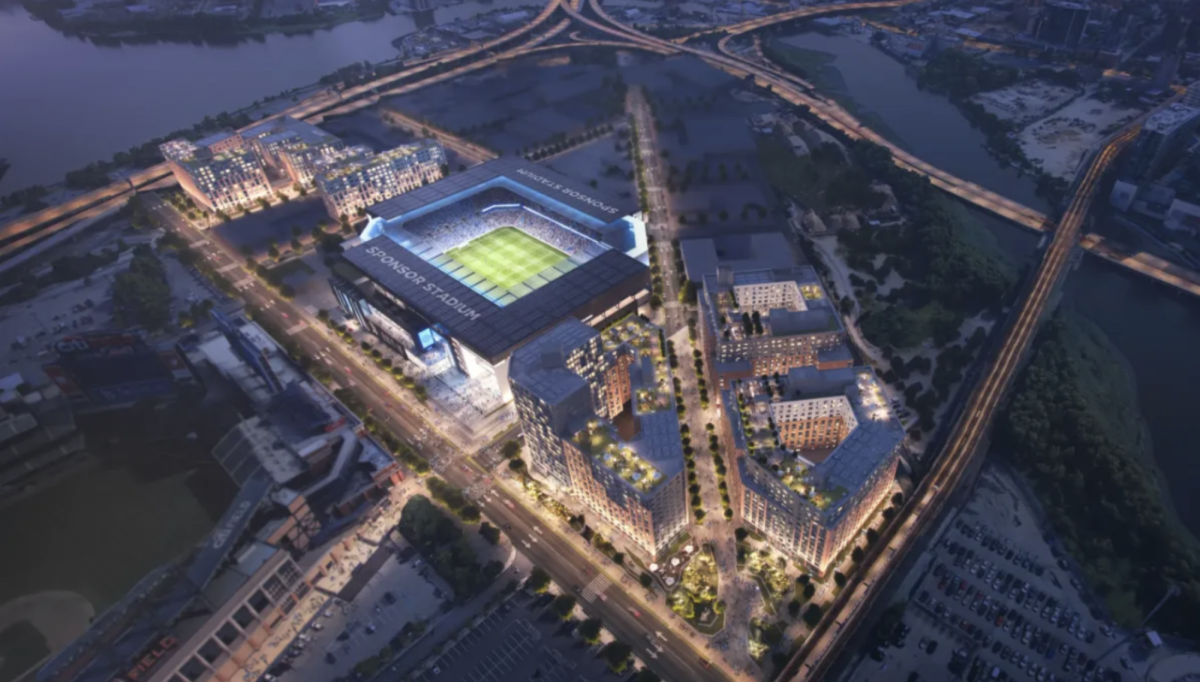
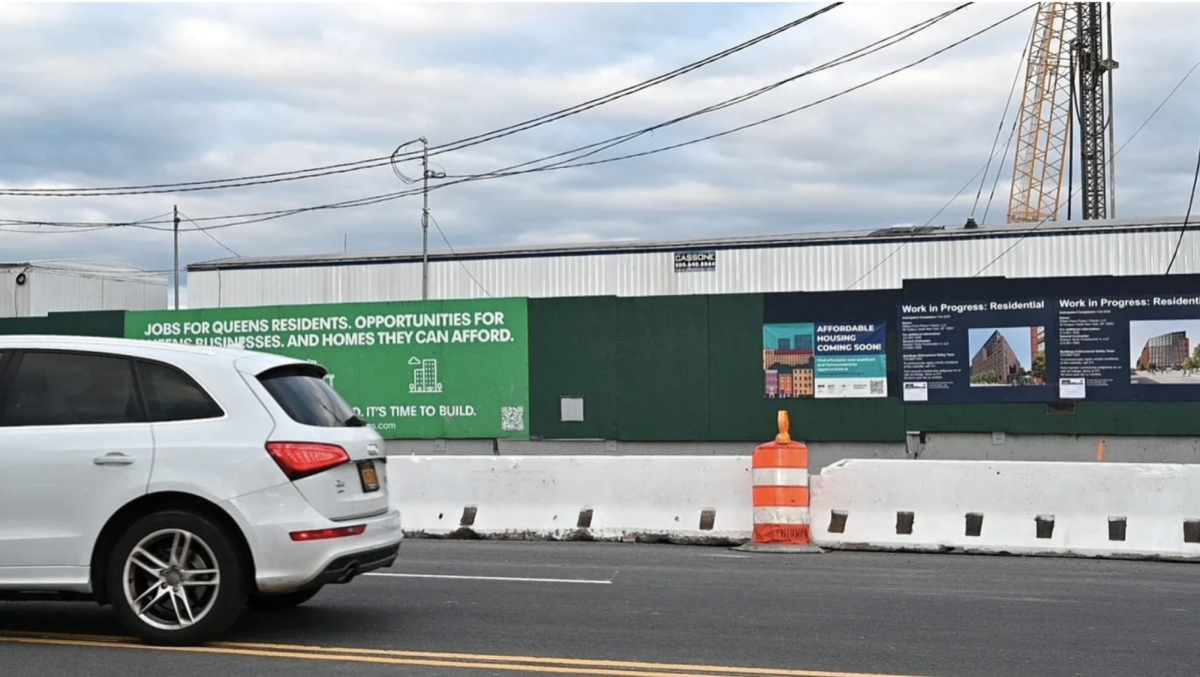
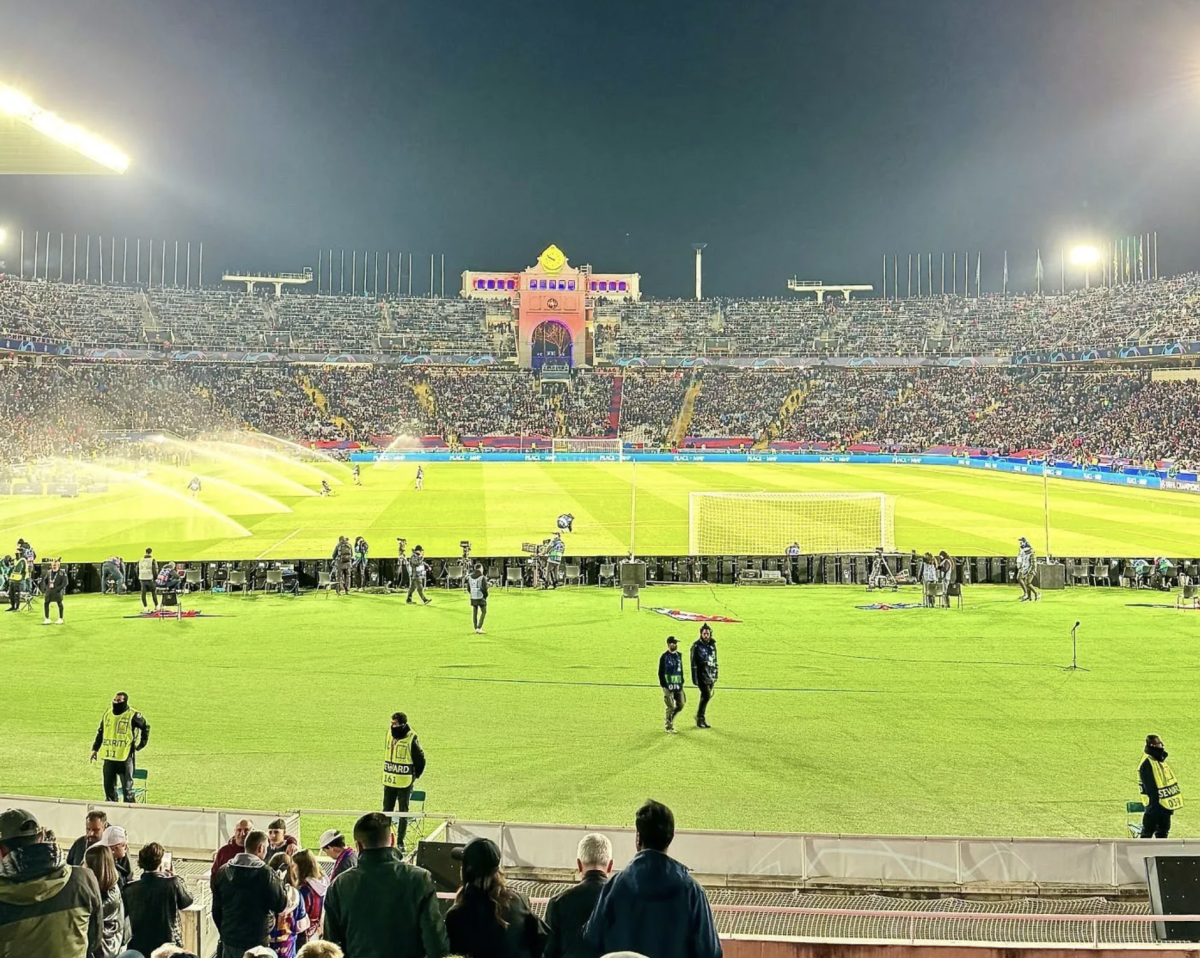
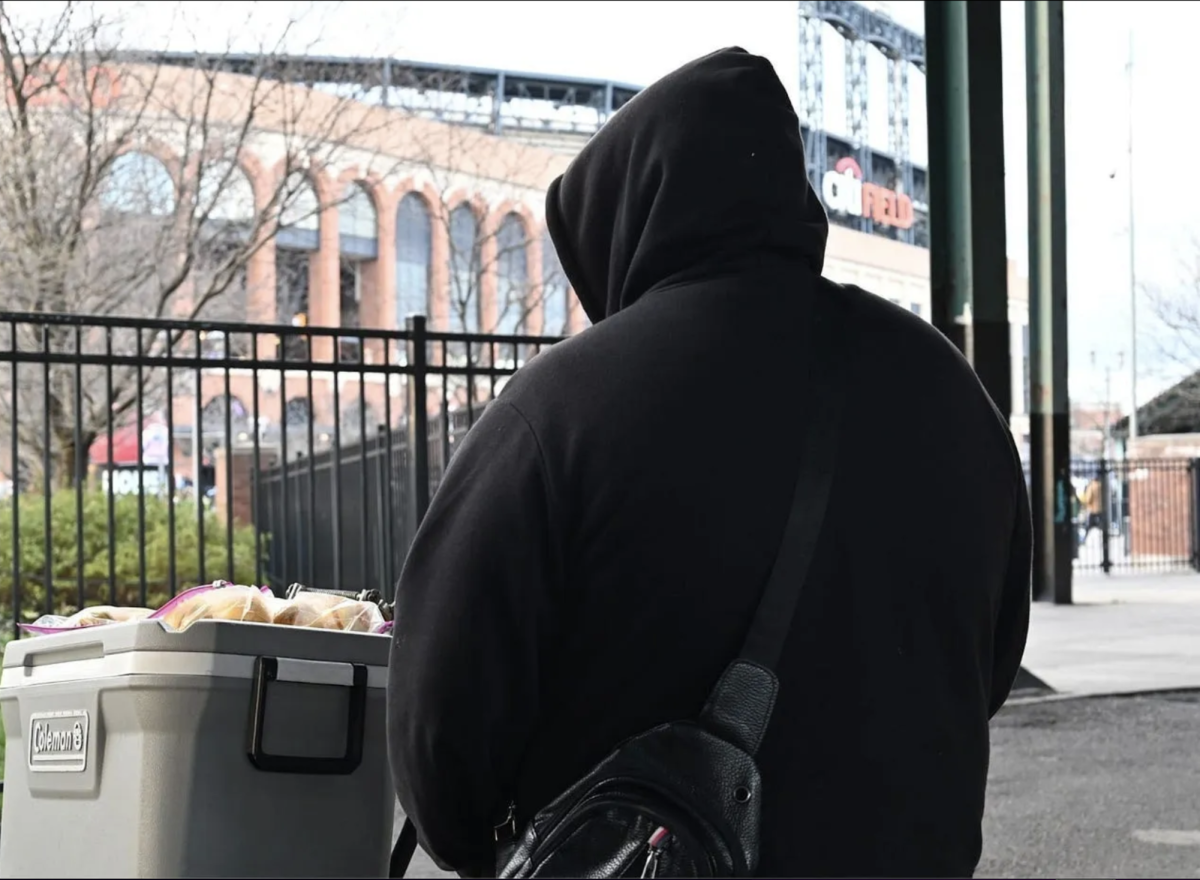
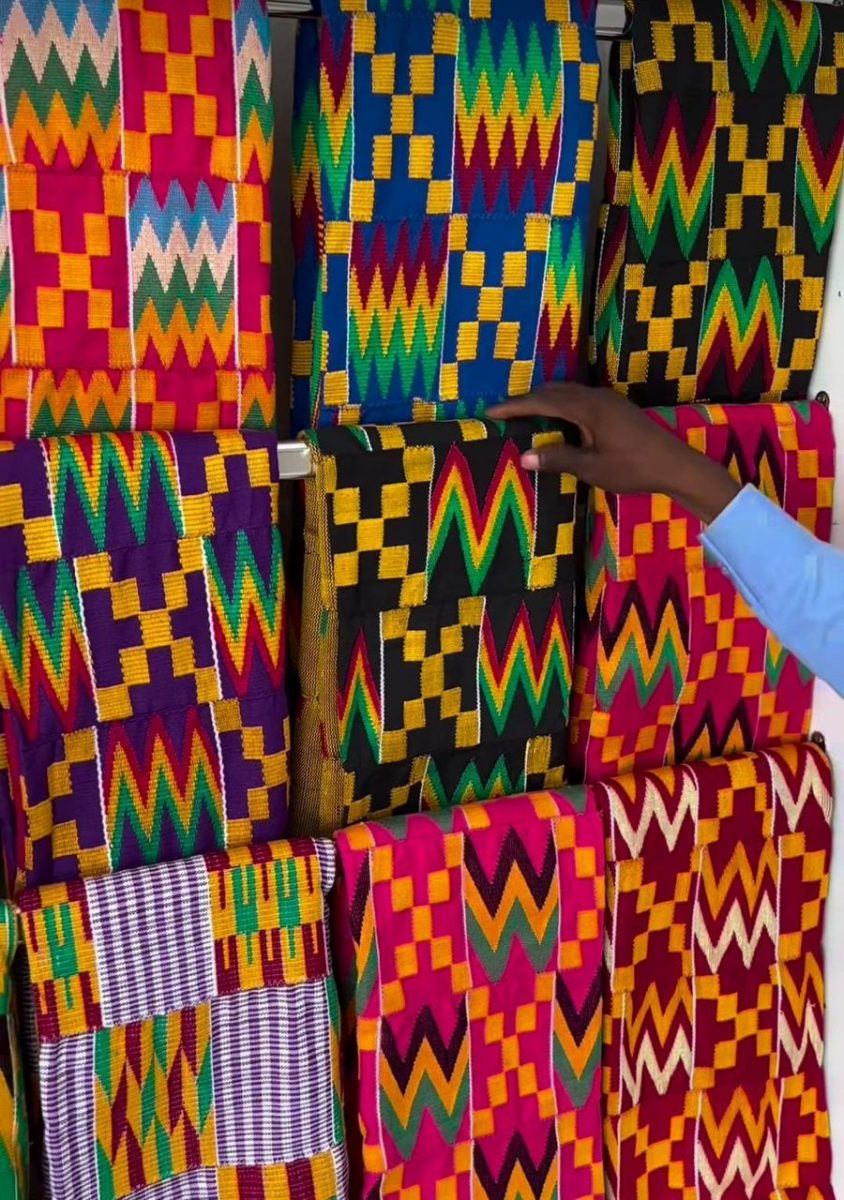
Eesha • Dec 15, 2024 at 12:58 pm
Great Job!